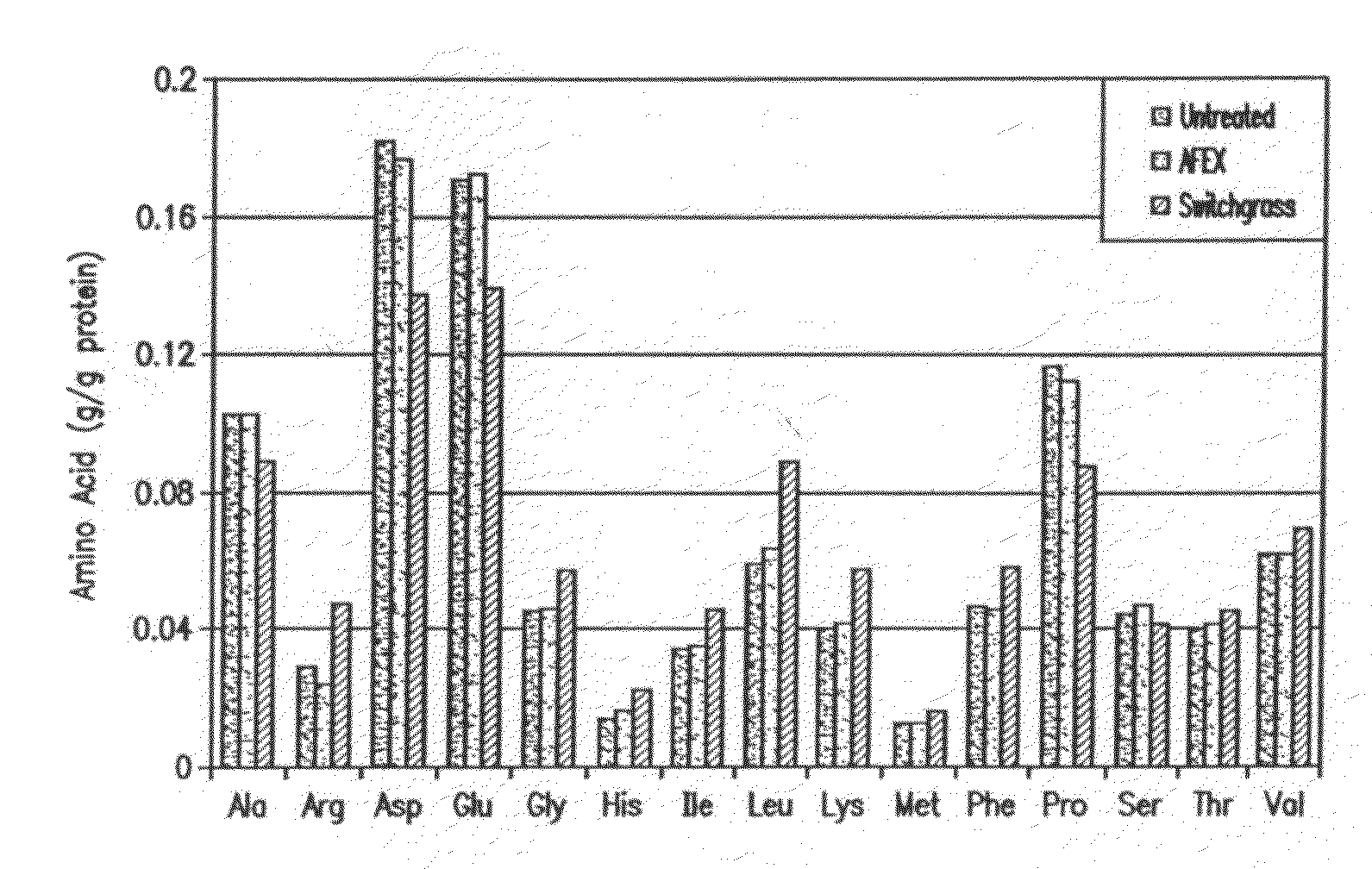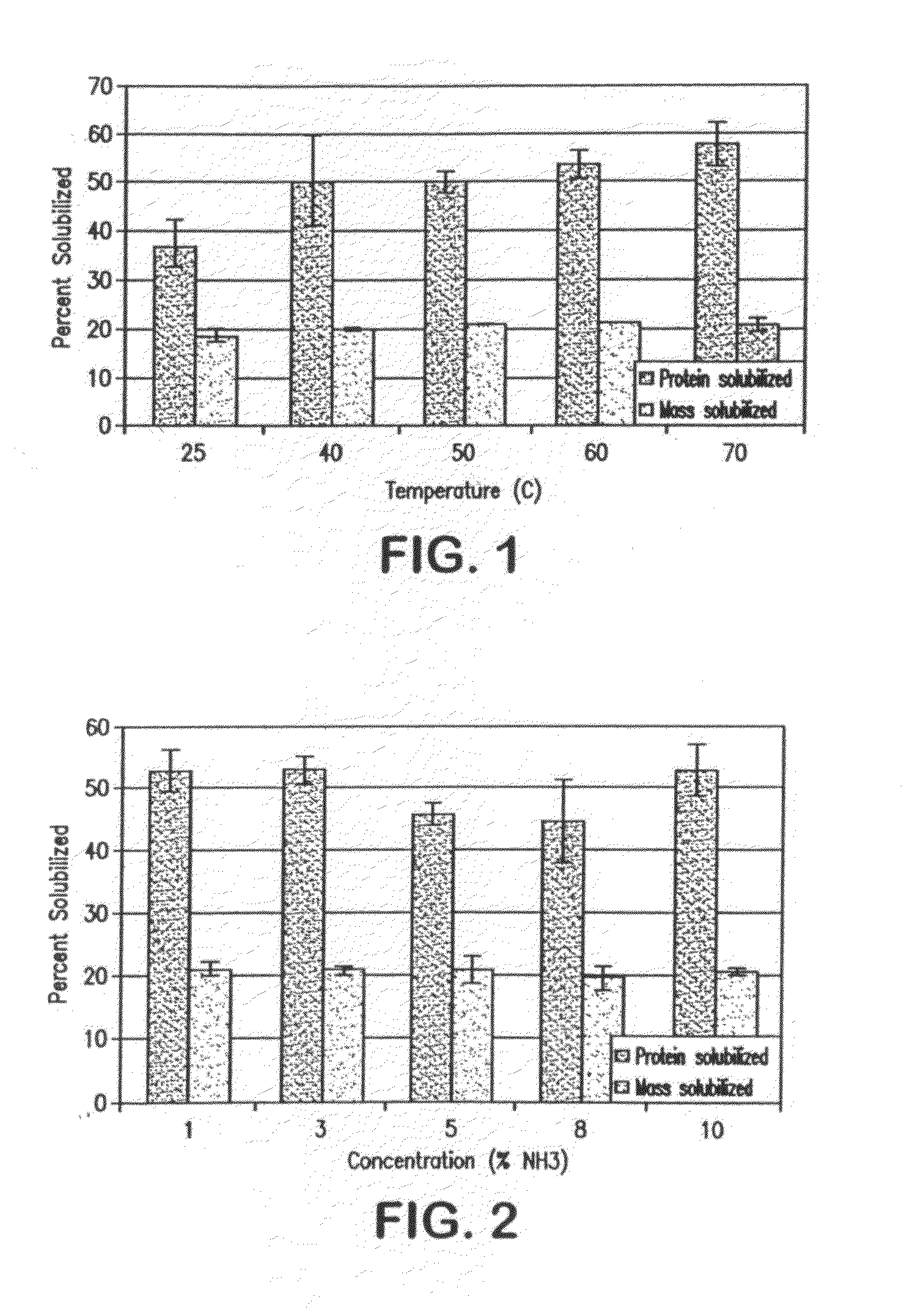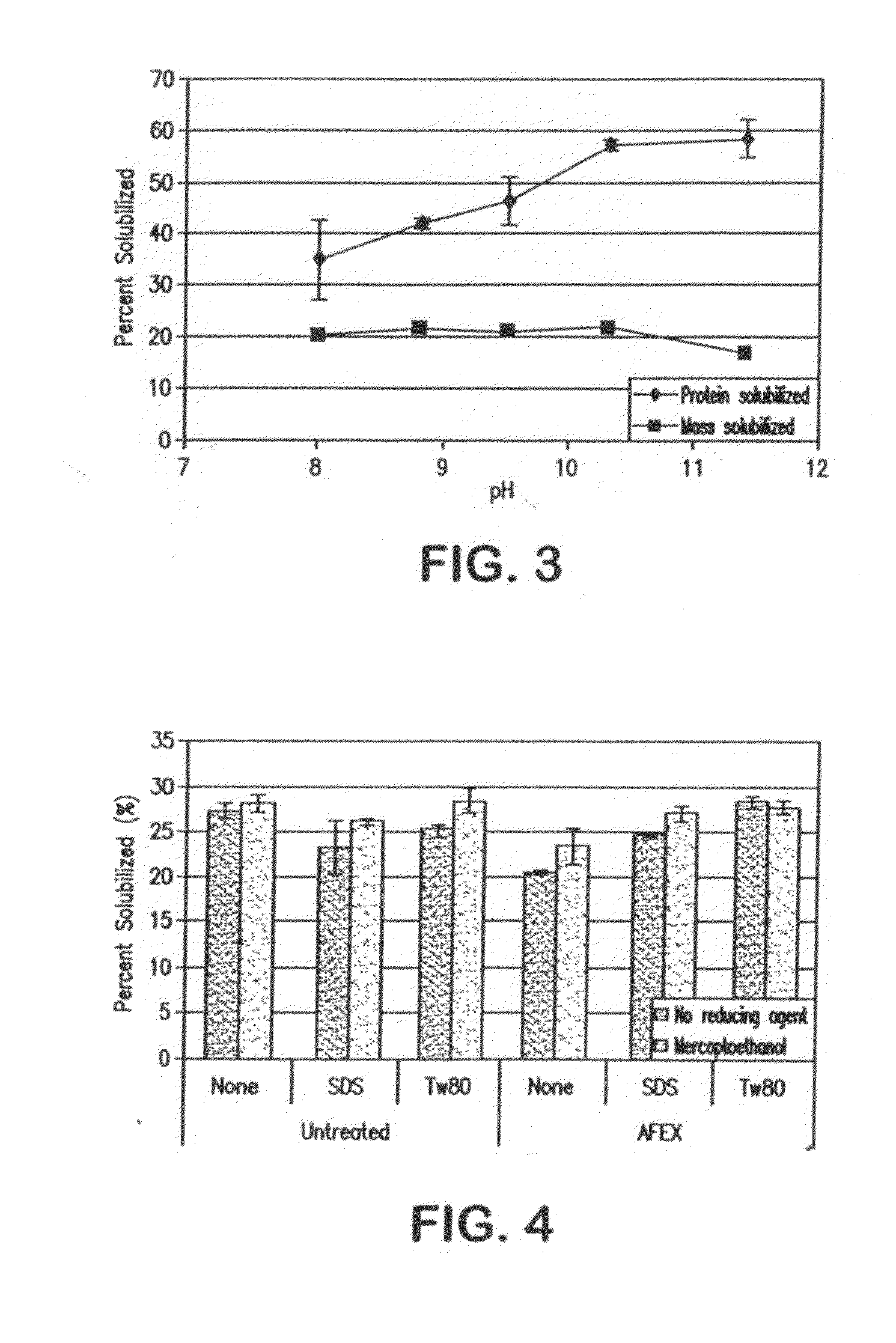Separation of Proteins from Grasses Integrated with Ammonia Fiber Explosion (AFEX) Pretreatment and Cellulose Hydrolysis
a technology of cellulose hydrolysis and ammonia fiber, which is applied in the direction of peptides, peptide/protein ingredients, peptide sources, etc., can solve the problems of low yield of enzymatic hydrolysis, low yield of protein from grains, moderate to low yield of leaf proteins, etc., and achieves high yield
- Summary
- Abstract
- Description
- Claims
- Application Information
AI Technical Summary
Benefits of technology
Problems solved by technology
Method used
Image
Examples
Embodiment Construction
[0025]All patents, patent applications, government publications, government regulations, and literature references cited in this specification are hereby incorporated herein by reference in their entirety. In case of conflict, the present description, including definitions, will control.
[0026]The term “AFEX” means Ammonia Fiber Expansion or Explosion. The fibers are opened in the process to expose the proteins and structural carbohydrates.
[0027]By disrupting the lignocellulosic structure of the biomass, proteins appear to more easily diffuse out of the biomass and into the solution. It may be possible to further increase yields of sugar and protein by further integration of pretreatment, extraction, and hydrolysis. Removing soluble material during extraction can remove hydrolysis inhibitors, whereas hydrolysis of the cellulose and hemicellulose can further improve protein recovery. One (1) particular advantage of integration is in the use of a dilute ammonia solution as an extractio...
PUM
| Property | Measurement | Unit |
|---|---|---|
| pH | aaaaa | aaaaa |
| temperature | aaaaa | aaaaa |
| flow rate | aaaaa | aaaaa |
Abstract
Description
Claims
Application Information
 Login to View More
Login to View More - R&D
- Intellectual Property
- Life Sciences
- Materials
- Tech Scout
- Unparalleled Data Quality
- Higher Quality Content
- 60% Fewer Hallucinations
Browse by: Latest US Patents, China's latest patents, Technical Efficacy Thesaurus, Application Domain, Technology Topic, Popular Technical Reports.
© 2025 PatSnap. All rights reserved.Legal|Privacy policy|Modern Slavery Act Transparency Statement|Sitemap|About US| Contact US: help@patsnap.com



